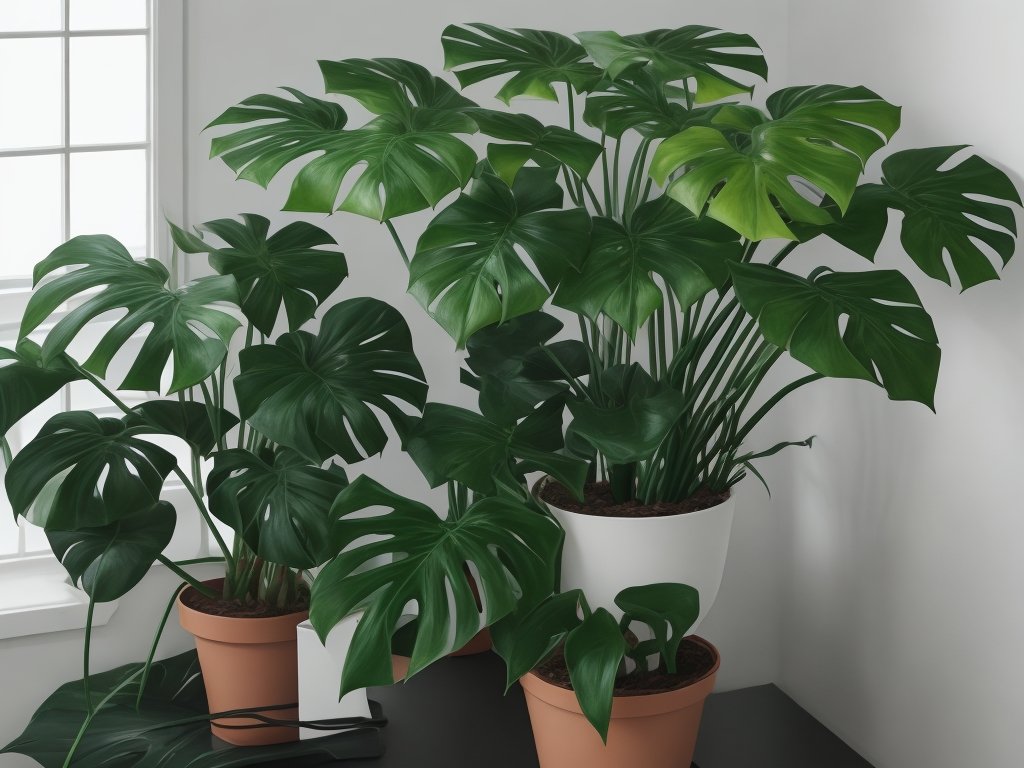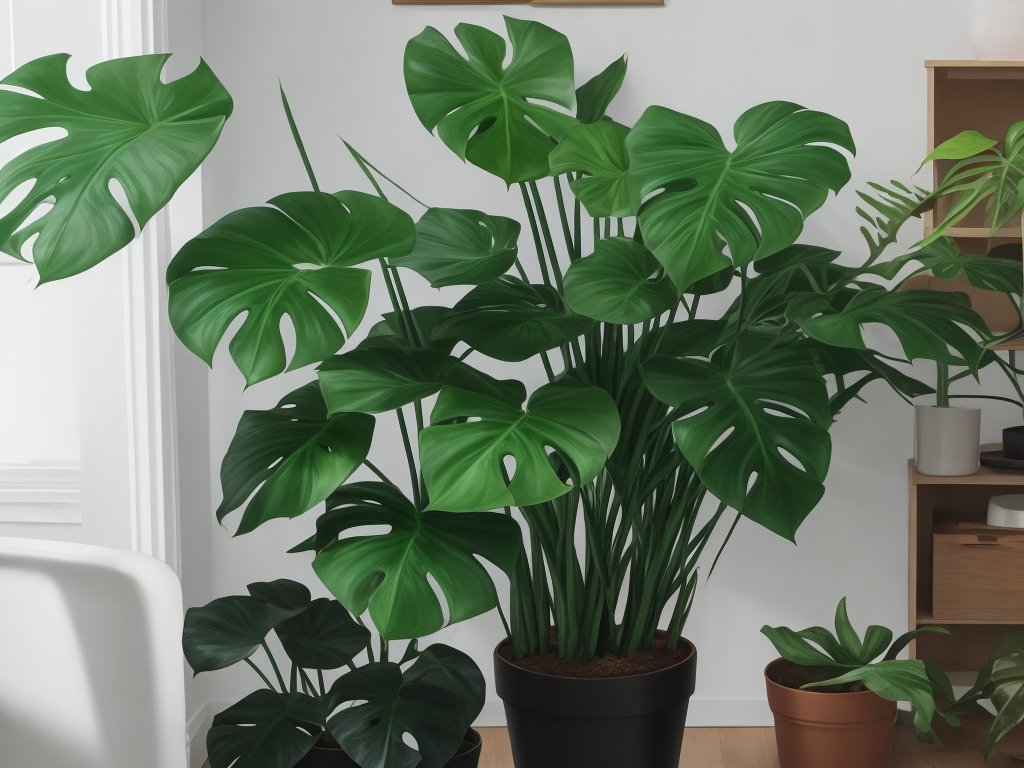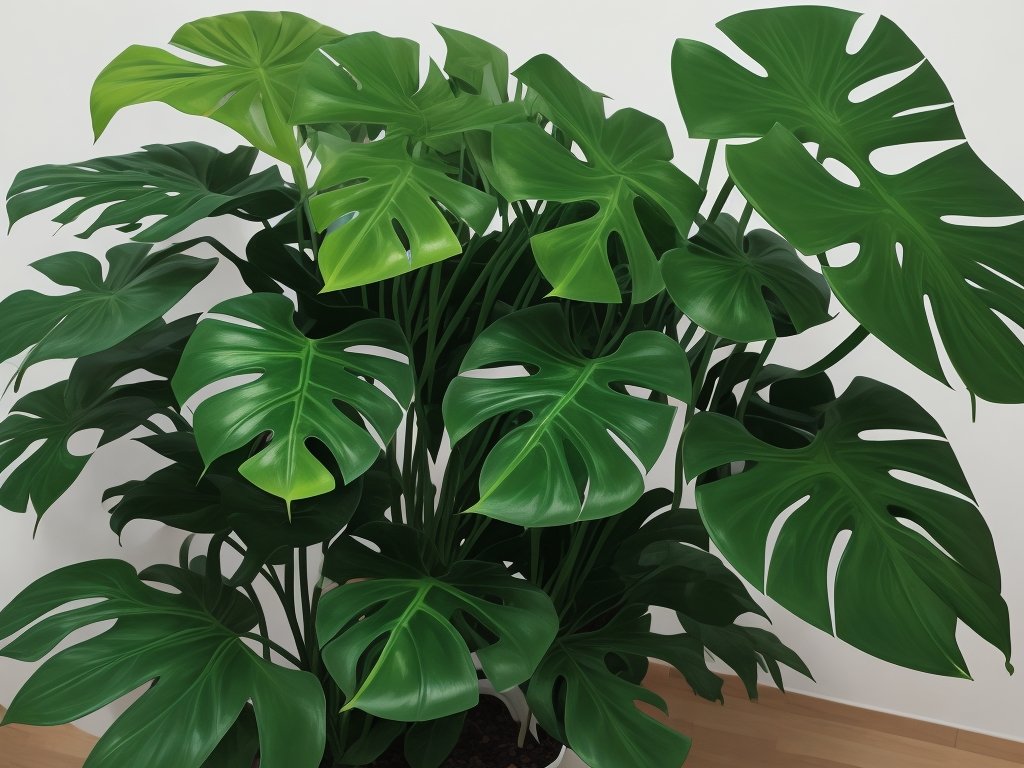Why Are The Older Leaves On My Monstera Yellowing?
Key Takeaways:
- Yellowing older leaves on a Monstera plant is normal and part of their natural growth cycle.
- Overwatering or underwatering can cause the older leaves of a Monstera to turn yellow.
- Nutrient deficiencies, such as lack of nitrogen or iron, can contribute to yellowing older leaves in a Monstera.
- Pests, such as spider mites or mealybugs, can also lead to yellowing older leaves on a Monstera plant.
Have you ever noticed the older leaves on your Monstera plant turning yellow?
If so, you’re not alone.
It’s a common concern among Monstera owners, and today, I’m here to shed some light on this puzzling phenomenon.
As someone who has spent countless hours researching and caring for Monstera plants, I understand the frustration that comes with seeing your beloved greenery looking less than perfect.
But fear not, there are several reasons why those older leaves might be yellowing, and in this article, we’ll explore the common causes, how to identify the problem, troubleshooting solutions, and prevention tips to keep your Monstera thriving.
So, sit back, relax, and let’s dive into the world of Monstera plants!
| Possible Causes | Solutions |
| 1. Natural Aging Process | – Nothing to worry about, it’s normal for older leaves to turn yellow and eventually die. – Trim off the yellow leaves if desired for aesthetic purposes. |
| 2. Overwatering | – Allow the soil to dry out between waterings – Adjust watering frequency to avoid excessive moisture – Check drainage and use a well-draining potting mix |
| 3. Underwatering | – Increase watering frequency – Ensure the plant receives enough water to keep the soil consistently moist, without being overly saturated |
| 4. Lack of Sunlight | – Place the Monstera in a brighter location – Avoid direct sunlight, but provide bright indirect light – Rotate the plant to ensure even exposure |
| 5. Nutrient Deficiency | – Use a balanced fertilizer specifically formulated for foliage plants – Follow the recommended dosage and frequency – Consider using a slow-release fertilizer for continuous nutrient supply |
| 6. Pest Infestation | – Inspect the plant for signs of pests and treat accordingly – Use appropriate insecticides or natural remedies – Regularly clean the plant’s leaves to prevent dust buildup |
Understanding Monstera Plants
Monstera plants are a popular choice for indoor greenery, known for their large, unique leaves and tropical aesthetic. Understanding their basic care needs and leaf aging process will help keep your Monstera healthy and thriving.
Monstera Plant Care Basics
Monstera plant care basics involve providing proper watering, adequate sunlight, and a well-draining soil mixture.
It’s important to water your Monstera when the top inch of soil is dry, but avoid overwatering.
Place your Monstera in bright, indirect sunlight, and rotate it regularly for even growth.
Use a balanced fertilizer every 2-4 weeks during the growing season.
Regularly check for pest infestations and trim any damaged or yellow leaves.

Typical Leaf Aging Process
Leaves naturally turn yellow and die as part of the normal aging process in Monstera plants.
It’s completely normal for older leaves to yellow and eventually drop off to make way for new growth.
This is just the plant’s way of conserving energy and directing nutrients to newer leaves.

Common Causes of Yellowing Leaves in Monstera Plants
The common causes of yellowing leaves in Monstera plants include natural leaf aging, overwatering, underwatering, lack of nutrients, environmental stress, and pests and diseases.
Natural Leaf Aging
As Monstera plants mature, it’s natural for their older leaves to yellow and eventually die off. This is part of the plant’s natural leaf aging process.
The older leaves are the first to show signs of aging, as the plant redirects nutrients and energy to newer growth.
It’s important to differentiate between natural leaf aging and other causes of yellowing leaves to properly care for your Monstera plant.
Overwatering
Overwatering is a common cause of yellowing leaves in Monstera plants.
When we water our plants too frequently or give them too much water at once, their roots can become waterlogged and suffocate.
This leads to various symptoms like yellowing leaves, wilting, and root rot.
It’s important to find the right balance and provide your Monstera with just the right amount of water.

Underwatering
Underwatering can cause yellowing leaves in Monstera plants. Signs include dry soil, drooping leaves, and slow growth.
To address it, adjust watering frequency and ensure the soil is consistently moist (but not waterlogged).
Regularly check the moisture level and provide water when needed.
Lack of Nutrients
Lack of nutrients can cause yellowing leaves in Monstera plants.
The plant may not be getting enough essential nutrients like nitrogen, phosphorus, or potassium.
This can happen if the plant’s soil is depleted or if it hasn’t been fertilized regularly.
Providing the plant with a balanced fertilizer can help address this issue.
Environmental Stress
Environmental stress refers to the negative impact on plants caused by unfavorable environmental conditions. This can include excessive heat, cold temperatures, high humidity, low light levels, or exposure to drafts.
These conditions can lead to yellowing leaves in Monstera plants.
Providing the ideal growing conditions, such as maintaining consistent temperature, humidity, and light levels, can help minimize environmental stress and keep your Monstera plant healthy. Additionally, avoiding sudden changes in temperature, protecting the plant from drafts, and ensuring proper air circulation can also reduce the risk of environmental stress.
Pests and Diseases
Pests and diseases can be common culprits when it comes to yellowing leaves in Monstera plants. Some common pests include spider mites, mealybugs, and scale insects.
Diseases like root rot and fungal infections can also impact the health of Monstera plants.
Regular inspection and prompt treatment can help prevent and address these issues.
Identifying the Problem with Older Leaves
When it comes to identifying the problem with older leaves on your Monstera plant, there are various factors to consider.
Differentiating between Natural Aging and Other Causes
Differentiating between natural aging and other causes is important when trying to identify the problem with older leaves on your Monstera plant. Natural aging occurs when older leaves naturally turn yellow and eventually die off.
Other causes of yellowing leaves can include overwatering, underwatering, nutrient deficiency, environmental stress, and pests/diseases.
By examining the signs and symptoms, such as leaf discoloration, leaf dropping, and root health, you can determine the underlying cause.
Signs of Overwatering
Signs of overwatering in Monstera plants include yellowing leaves, leaf drop, mushy or slimy roots, and a strong odor coming from the soil.
The leaves may also become wilted or develop brown spots.
It’s important to address overwatering promptly to prevent further damage to the plant.
Signs of Underwatering
Signs of underwatering in Monstera plants include dry and brittle leaves, wilting, yellowing or browning of leaves, and leaf drop. The soil may also appear dry and crumbly, and the plant may show signs of stress, such as stunted growth and lack of new leaf growth.
Signs of Nutrient Deficiency
Signs of nutrient deficiency in Monstera plants can manifest in various ways. Look out for yellowing or pale leaves, especially in newer growth.
Leaves may also exhibit stunted growth, brown or dry leaf margins, and overall wilting.
Additionally, you may notice slower or limited foliage production, as well as weak stems and branches. Keep an eye out for these signs to address nutrient deficiencies promptly.
Signs of Environmental Stress
Signs of environmental stress in Monstera plants can manifest in several ways.
Look out for wilting or drooping leaves, browning or yellowing leaves, stunted growth, and leaf discoloration.
Environmental stress can be caused by factors such as extreme temperatures, drafts, low humidity, insufficient light, or exposure to chemicals.
Regularly inspecting your plant and addressing any environmental issues can help keep your Monstera healthy and thriving.
Signs of Pests and Diseases
Signs of pests and diseases in Monstera plants can include:
- Yellowing or browning leaves with spots or holes.
- Wilting or drooping foliage, even when adequately watered.
- Sticky residue or webbing on the leaves.
- Stunted or distorted growth.
- Presence of insects such as aphids, mealybugs, or spider mites.
- Fungal or bacterial infections causing rot or unusual discoloration.
It’s important to regularly inspect your plants and take immediate action if you notice any of these signs to prevent further damage and maintain the health of your Monstera.
Troubleshooting and Solutions
Let’s dive into some troubleshooting and solutions for those yellowing Monstera leaves!
Adjusting Watering Routine
Adjusting your watering routine is important for maintaining the health of your Monstera plant. Be sure to water your plant when the top inch of soil feels dry to the touch.
Avoid overwatering, as this can lead to root rot.
Make sure the pot has good drainage to prevent water from sitting in the bottom. Consider using a moisture meter to help gauge when to water.
Monstera plant healthyis different, so it’s important to observe and adjust based on your Monstera’s specific needs.
Providing Adequate Nutrition
To provide adequate nutrition to your Monstera plant, you can start by fertilizing it regularly with a balanced houseplant fertilizer.
You can dilute the fertilizer and apply it to the soil every 2-4 weeks during the growing season.
Additionally, make sure to use well-draining potting soil and consider adding organic matter like compost to promote healthy root growth.
Finally, don’t forget to water your Monstera properly and avoid overwatering, as this can lead to nutrient deficiencies.
Addressing Environmental Factors
To address environmental factors that may be causing yellowing leaves in your Monstera plant, start by assessing the temperature and humidity levels in the environment.
Monstera plants thrive in temperatures between 65-80°F (18-27°C) and humidity levels of 50-60%.
Provide adequate indirect sunlight and avoid placing the plant near drafts or air conditioning vents.
Additionally, ensure proper air circulation and avoid over-fertilizing, as this can lead to salt buildup in the soil.
Regularly inspect your plant for pests and diseases, and take prompt action if any are detected.
Treating Pests and Diseases
Treating pests and diseases in Monstera plants is essential for their overall health. Here are some steps you can take to address these issues:
- Identify the problem: Differentiate between natural leaf aging and signs of pests or diseases. Look for common signs such as distorted leaves, discoloration, holes, webs, or sticky residue.
- Organic pest control: Use natural methods like neem oil or insecticidal soap to treat common pests like aphids, mealybugs, or spider mites. Apply the solution as directed on the packaging.
- Fungal or bacterial infections: If you notice rot, mold, or leaf spots, it may be due to overwatering or poor air circulation. Adjust your watering routine and ensure proper ventilation to prevent the spread of these diseases.
- Isolate affected plants: If you have multiple Monstera plants, it’s important to isolate any infected ones to prevent the spread of pests or diseases. Keep them in a separate area until the issue is resolved.
- Consult a professional: If the problem persists or worsens, it’s best to seek advice from a plant expert or a local garden center. They can offer specific recommendations or suggest appropriate treatments.
Remember, prevention is key to keeping your Monstera plants healthy. Regularly inspect your plants for signs of pests or diseases, maintain proper watering and ventilation, and provide them with a suitable growing environment.
Prevention and Maintenance Tips
To prevent yellowing leaves on your Monstera, focus on proper watering, fertilizing, creating ideal growing conditions, and regular inspection for pests.
Proper Watering Techniques
Proper watering techniques for Monstera plants involves watering when the top inch of soil feels dry to the touch, but not allowing the soil to become completely dry.
Avoid overwatering, as it can lead to root rot.
Use well-draining soil and ensure that excess water can drain out of the pot.
Water thoroughly but avoid waterlogging.
Regularly check the moisture level in the soil to maintain the right balance.
Avoid water sitting in the saucer for more than an hour or two.
Fertilizing Monstera Plants
Monstera plants maturetera plant, use a balanced liquid fertilizer diluted to half the recommended strength.
Apply it every month during the growing season (spring and summer) and reduce frequency during the colder months.
Water your plant thoroughly before applying fertilizer and avoid over-fertilizing, as it can lead to nutrient burn.
Regularly check the soil’s moisture levels and adjust your watering and fertilizing routine accordingly.
Creating Ideal Growing Conditions
To create ideal growing conditions for your Monstera plant, provide bright but indirect sunlight, with temperatures between 65-85°F (18-29°C). Use well-draining soil and pots with drainage holes.
Keep humidity levels around 50-60%.
Water when the top inch of soil feels dry, but avoid overwatering. Regularly dust or wipe the leaves to keep them clean and allow for proper photosynthesis.
Regular Inspection and Pest Control
Regularly inspect your Monstera plant by checking the leaves, stems, and soil for any signs of pests or diseases.
Look for discoloration, spots, holes, or webbing.
If you notice any issues, promptly treat them with organic pest control methods such as neem oil or insecticidal soap.
Regular inspection and prompt pest control can help maintain the health of your Monstera plant.
Frequently Asked Questions
How often should I water my Monstera plant?
Water your Monstera plant when the top inch of soil feels dry to the touch. This usually means watering every 1-2 weeks, but it can vary depending on factors like temperature, humidity, and pot size.
Keep in mind that overwatering can lead to root rot, so make sure the soil has proper drainage.
Can I save yellow leaves on my Monstera?
propagate Monstera plantsleaves on your Monstera! Start by identifying the cause of the yellowing, like overwatering or nutrient deficiency.
Adjust your watering routine, provide adequate nutrition, and address any environmental stress.
With the right care, your Monstera’s yellow leaves can recover and become healthy again.
How can I prevent pests infestation in my Monstera?
To prevent pests infestation in your Monstera plant, there are a few things you can do.
Firstly, make sure to inspect your plant regularly for any signs of pests.
Secondly, keep your plant’s environment clean and free of debris that may attract pests.
Thirdly, avoid overwatering your plant as it can create a damp environment that pests thrive in.
Finally, if you do notice pests on your plant, treat them promptly with appropriate insecticides or natural pest control methods.
What are the signs of nutrient deficiency in Monstera plants?
Nutrient deficiency in Monstera plants can be observed through various signs.
These include yellowing leaves, stunted growth, leaf discoloration or spots, and overall weak or wilting appearance.
It’s important to identify the specific nutrients lacking and provide appropriate fertilization to address the deficiency.
Can I propagate Monstera plants from yellowing leaves?
Yes, you can propagate Monstera plants from yellowing leaves. These older leaves may not look their best, but they can still be used to propagate new plants.
Simply cut a healthy section with a node and aerial root, and place it in water or soil to encourage root growth.
Final Verdict
Yellowing leaves on Monstera plants can be caused by a variety of factors such as natural aging, overwatering, underwatering, lack of nutrients, environmental stress, and pests and diseases. It is important to differentiate between natural aging and other causes in order to effectively troubleshoot and find solutions.
By adjusting watering routines, providing adequate nutrition, addressing environmental factors, and treating pests and diseases, you can prevent yellowing leaves and maintain the health of your Monstera plant.
Regular inspection and proper care are essential for the prevention and maintenance of these beautiful plants.







